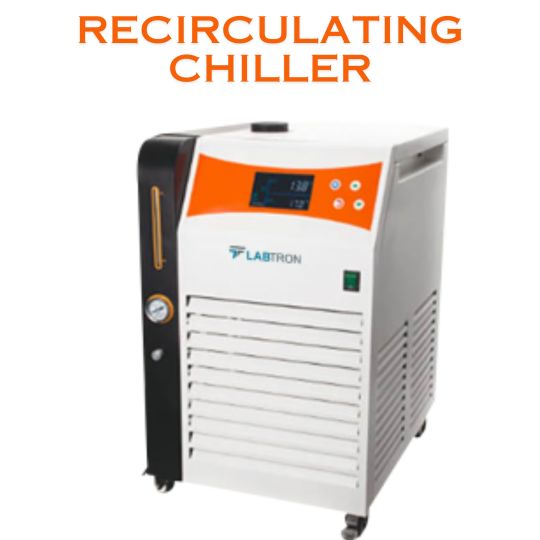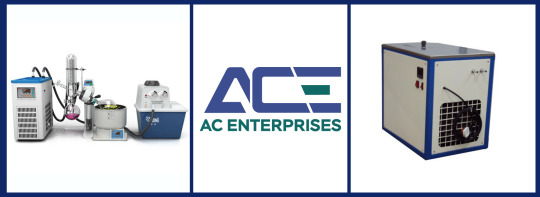#RecirculatingChiller
Explore tagged Tumblr posts
Text
Recirculating Chiller
Labotronics Recirculating Chiller is a PID-controlled 8 L unit that offers an efficient cooling mechanism with a temperature range of 5-40C. Features a refrigerant R134, a color LCD screen, automatic overheating protection, over-temperature and low water level alerts, and an adjustable pressure pump.

0 notes
Text
Recirculating Water Chiller Bath NRWC-205

Labnics Recirculating Water Chiller Bath is a robust laboratory cooling unit with a durable all-steel design. It offers precise temperature stability of plus-minus 0.3 degrees Celsius, a powerful cooling capacity of 1200 watts, and a flow rate of 20 liters per minute for efficient performance.
0 notes
Text
Fison Recirculating Chiller is a PID-controlled unit with 8L capacity and 0-1.5 bar pump pressure, offering precise cooling of 5 to 40C. Features include a TECUMSEH compressor and EEV technology. It ensures stable, low-noise operation, mobility, and safety with auto-alarm and pressure gauge systems.
0 notes
Text
Recirculating Chiller
Labtron Recirculating Chiller is a high-performance circulating water pump featuring a 0 to 1.5 bar pump capacity pressure. With a temperature range of 5˚C to 40˚C, it includes a PT100 temperature sensor. This chiller ensures long-term continuous operation and leak prevention with excellent sealing. The adjustable pump pressure is controlled by a rotary knob, and the color LCD screen displays comprehensive running data and dynamic identifiers.

0 notes
Text
Recirculating Chillers Market Forecast 2024 to 2032
Recirculating chillers are cooling systems designed to circulate a fluid, typically water or a water-glycol mixture, to remove heat from various industrial or scientific processes. These chillers are used to maintain precise and stable temperature conditions, ensuring the efficient operation of equipment or experiments that generate heat.
The Recirculating Chillers Market was valued at USD 611.50 Million in 2022 and is expected to register a CAGR of 7.47% by 2032.
Research fields such as biotechnology, pharmaceuticals, materials science, and electronics rely heavily on precise temperature control to conduct experiments and develop innovative technologies. Recirculating chillers play a crucial role in maintaining stable and controlled temperatures, thereby driving demand from these sectors.
Get a Free Sample Copy
#RecirculatingChillers#CoolingSystems#ChillerTechnology#TemperatureControl#IndustrialCooling#ChillerUnits#CoolingSolutions#LabEquipment#ProcessCooling
0 notes
Text
The Key Advantages of Using Recirculating Chiller

Recirculating chillers are one of the most efficient ways to cool a process. By using a recirculating chiller, you can achieve process temperatures as low as -60°C. Recirculating chillers are also very versatile, and can be used in a wide variety of applications. There are many advantages to using a recirculating chiller, including the following: -Improved Process Control: With a recirculating chiller, you can precisely control the process temperature. This is especially important in processes that are temperature-sensitive. -Efficient Cooling: Recirculating chillers are very efficient, and can save you money on your energy bills. -Less downtime: By using a recirculating chiller, you can minimize downtime and keep your process running smoothly. If you are considering using a recirculating chiller, keep these advantages in mind!
Recirculating chillers are used to cool laboratory equipment such as rotary evaporators. Chillers are available in a variety of cooling capacities, achievable temperature ranges, and reservoir volumes. Applications include separations, chemical reaction control, spectroscopy, and laboratory automation.
0 notes
Text
Recirculating Water Chiller Bath NRWC-100

Labnics Recirculating Water Chiller Bath is a durable laboratory chiller with steel construction for routine cooling applications. It features a 3-liter capacity, a temperature range from minus 5 degrees Celsius to room temperature, a 500 watt cooling capacity, and a 20 liter per minute pump flow rate.
0 notes